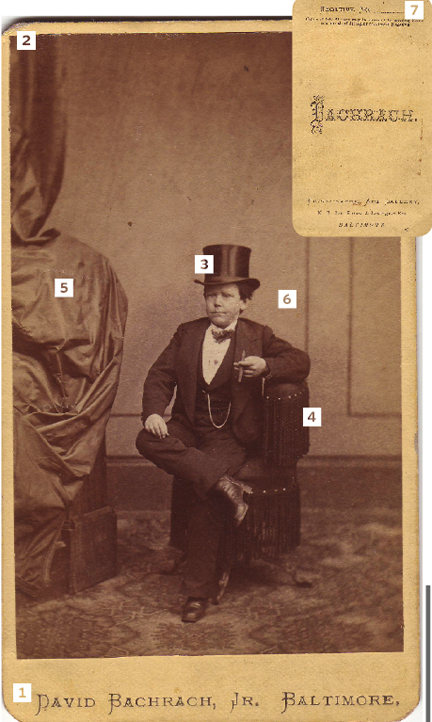Sign up for the Family Tree Newsletter! Plus, you’ll receive our 10 Essential Genealogy Research Forms PDF as a special thank you.
In the 1860s, circus founder P.T. Barnum hired Charles Sherwood Stratton to be Gen. Tom Thumb, a character inspired by the 17th-century English fairy tale. Crowds visited the Barnum show to catch a glimpse of Tom Thumb and later his wife, Lavinia Warren. Soon, every sideshow and circus copied Barnum’s model by adding “little people” to their acts. Photo studios capitalized on the public’s fascination with sideshows by printing photo cards of the stars, which were widely collected.
This card photograph was found in a group of family images Darlene Homer’s great-grandfather passed down to her. There’s no doubt this man is diminutive in stature. The mystery is whether the portrait shows one of Homer’s relatives or a collectable image.
Homer is convinced this man is an ancestor. To her knowledge, her great-grandfather’s photo collection doesn’t contain any non-family pictures. She also knows that height variations—both notably short and notably tall—are part of her father’s family history.
Homer’s great-grandfather arrived in New York from Germany on the SS Hermann June 4, 1866. He bought land in Burnside Township, Mich., in 1872. Homer knows from other images that he isn’t the man in this picture. Six years are missing from Homer’s timeline of her ancestor’s life, and this picture is in that time frame. She wonders if he stopped in Baltimore on his way to Michigan.
To determine whether the man pictured is a relative, Homer should research any family members living in Baltimore around the early 1870s, when the photo was taken. Baltimore city directories for the 1870s are online at
Internet Archive.
1. German immigrant David Bachrach Jr. took this image at his Baltimore studio probably between 1869 and 1875, when he partnered with his brother in Bachrach and Bros. Learn more in Photographed by Bachrach: 125 Years of American Portraiture by Douglas Collins (Rizzoli).
2. Cartes de visite were small photos (2.5×4 inches) mounted on cardstock. The slight yellowing and rounded corners date this image to the circa-1870 time frame.
3. A well-dressed 19th-century man posed with a jacket, vest, shirt and tie, and of course, hat. Stovepipe hats, like those worn by Abraham Lincoln, were both fashionable and functional: Lincoln and other men carried papers in their hats. (You can learn more about using your ancestors’ toppers to date family photos in my book
Fashionable Folks: Bonnets and Hats 1840-1900, available from
Family Tree Shop.
4. Bachrach posed this gentleman in a comfortable upholstered chair with fringe. These posing chairs were found in photo studios beginning in the late 1860s. It’s likely the chair in this photo was made for children or women.
5. The size of the drapery and the details in the wall behind the man provide a scale of reference.
6. This man’s ease in front of the camera suggests it’s not his first time being photographed.
7. On the reverse of the photo are lines for additional information relating to Bachrach’s business. He could assign a negative number so clients could order copies in the future.
From the March/April 2012 Family Tree Magazine





